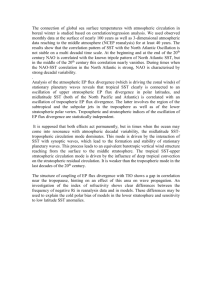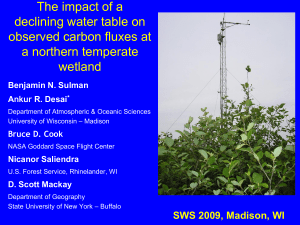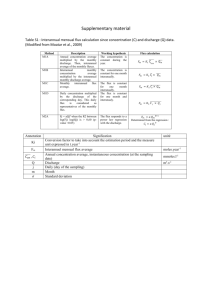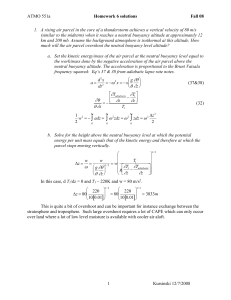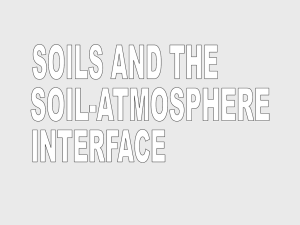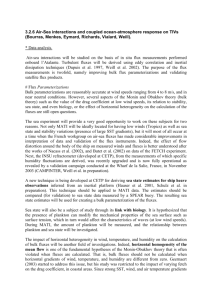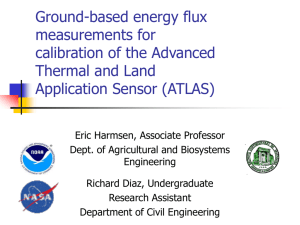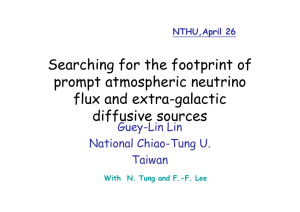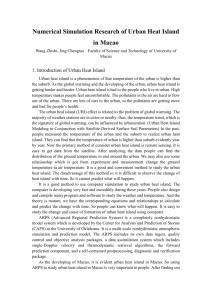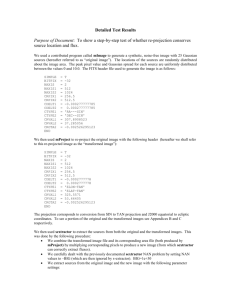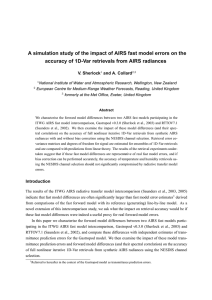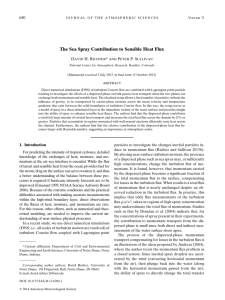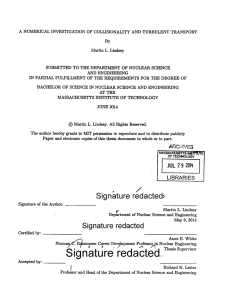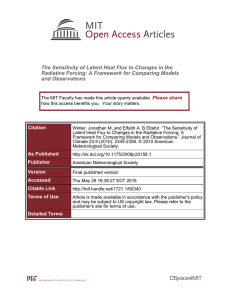Satellite-derived turbulent sensible and latent heat flux products are
advertisement
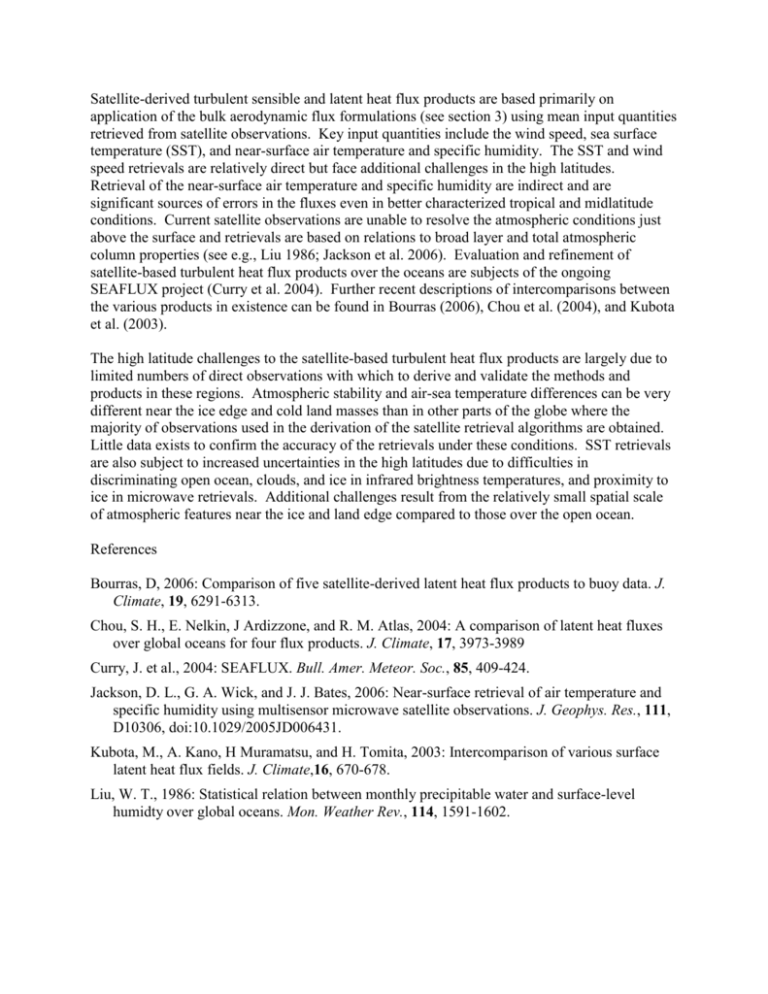
Satellite-derived turbulent sensible and latent heat flux products are based primarily on application of the bulk aerodynamic flux formulations (see section 3) using mean input quantities retrieved from satellite observations. Key input quantities include the wind speed, sea surface temperature (SST), and near-surface air temperature and specific humidity. The SST and wind speed retrievals are relatively direct but face additional challenges in the high latitudes. Retrieval of the near-surface air temperature and specific humidity are indirect and are significant sources of errors in the fluxes even in better characterized tropical and midlatitude conditions. Current satellite observations are unable to resolve the atmospheric conditions just above the surface and retrievals are based on relations to broad layer and total atmospheric column properties (see e.g., Liu 1986; Jackson et al. 2006). Evaluation and refinement of satellite-based turbulent heat flux products over the oceans are subjects of the ongoing SEAFLUX project (Curry et al. 2004). Further recent descriptions of intercomparisons between the various products in existence can be found in Bourras (2006), Chou et al. (2004), and Kubota et al. (2003). The high latitude challenges to the satellite-based turbulent heat flux products are largely due to limited numbers of direct observations with which to derive and validate the methods and products in these regions. Atmospheric stability and air-sea temperature differences can be very different near the ice edge and cold land masses than in other parts of the globe where the majority of observations used in the derivation of the satellite retrieval algorithms are obtained. Little data exists to confirm the accuracy of the retrievals under these conditions. SST retrievals are also subject to increased uncertainties in the high latitudes due to difficulties in discriminating open ocean, clouds, and ice in infrared brightness temperatures, and proximity to ice in microwave retrievals. Additional challenges result from the relatively small spatial scale of atmospheric features near the ice and land edge compared to those over the open ocean. References Bourras, D, 2006: Comparison of five satellite-derived latent heat flux products to buoy data. J. Climate, 19, 6291-6313. Chou, S. H., E. Nelkin, J Ardizzone, and R. M. Atlas, 2004: A comparison of latent heat fluxes over global oceans for four flux products. J. Climate, 17, 3973-3989 Curry, J. et al., 2004: SEAFLUX. Bull. Amer. Meteor. Soc., 85, 409-424. Jackson, D. L., G. A. Wick, and J. J. Bates, 2006: Near-surface retrieval of air temperature and specific humidity using multisensor microwave satellite observations. J. Geophys. Res., 111, D10306, doi:10.1029/2005JD006431. Kubota, M., A. Kano, H Muramatsu, and H. Tomita, 2003: Intercomparison of various surface latent heat flux fields. J. Climate,16, 670-678. Liu, W. T., 1986: Statistical relation between monthly precipitable water and surface-level humidty over global oceans. Mon. Weather Rev., 114, 1591-1602.

